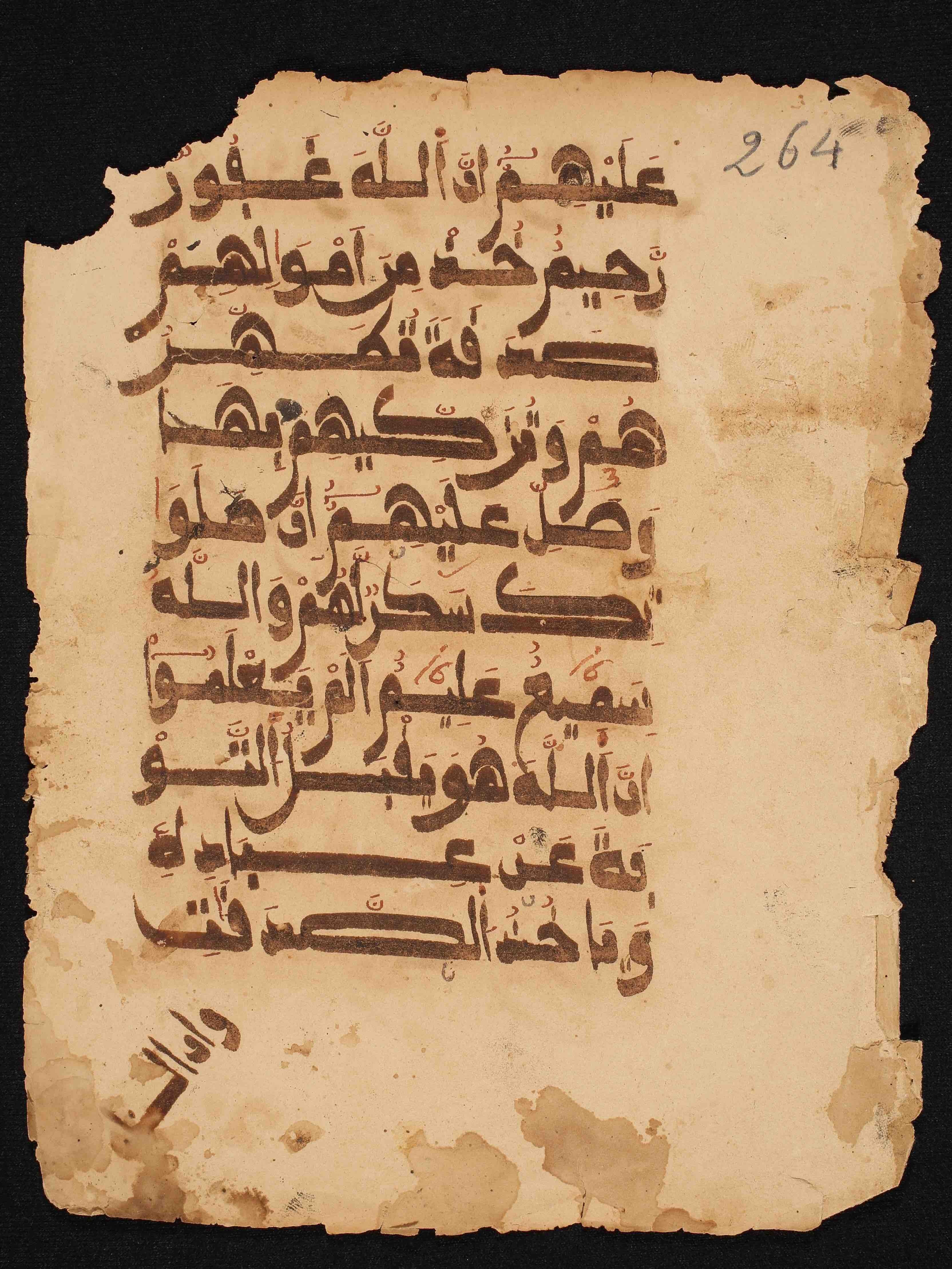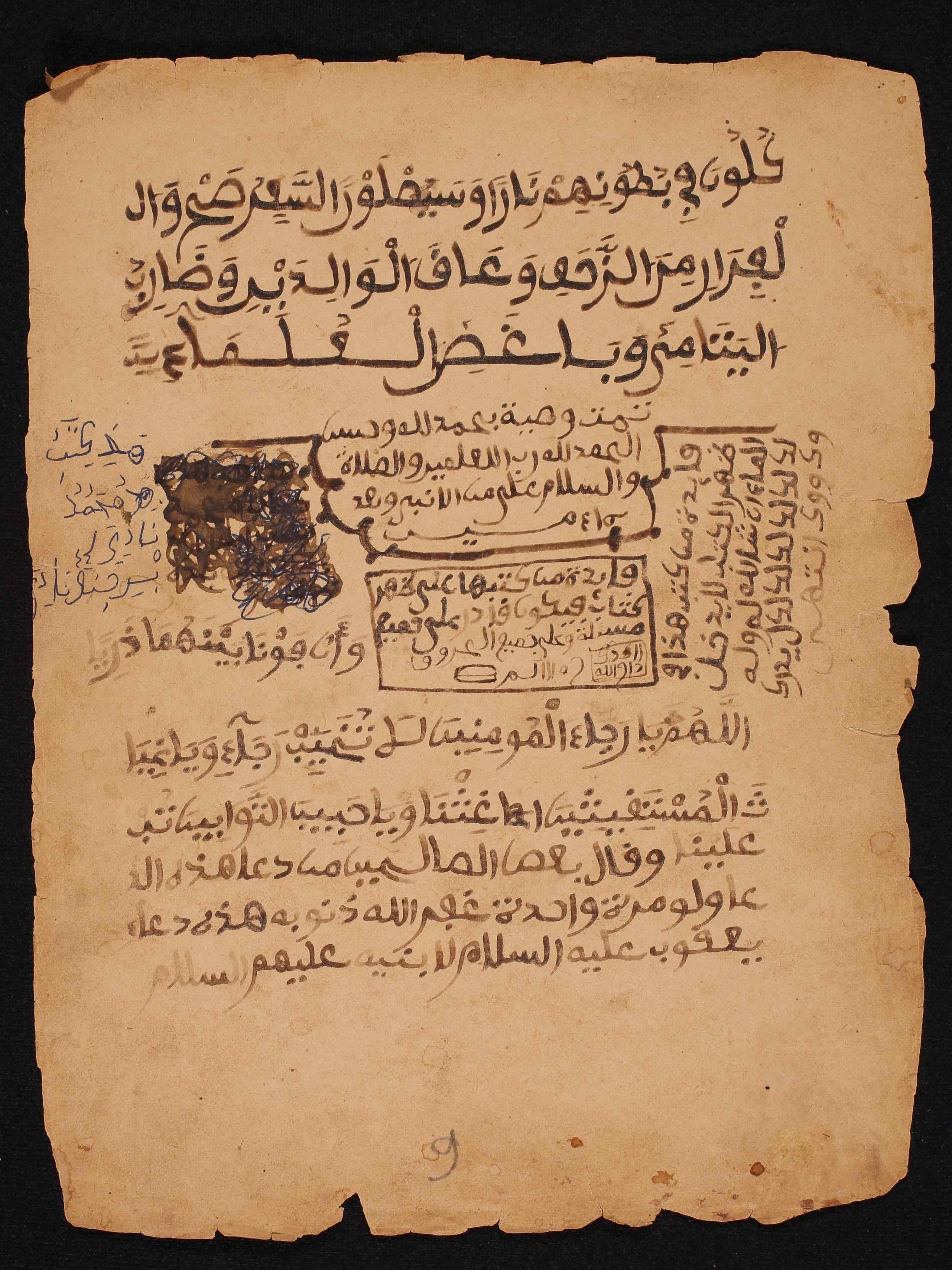Why So Many Fragments? Incomplete Manuscripts In The Timbuktu Collections.
Why so Many Fragments? Incomplete Manuscripts in the Timbuktu Collections.
This story is part of an ongoing series of editorials in which HMML curators and catalogers examine how specific themes appear across HMML’s digital collections. From the Islamic collection, Dr. Ali Diakite and Dr. Paul Naylor share this story about Fragments.
A large amount of the manuscripts digitized in Timbuktu, Mali, that we at HMML have cataloged are fragments—missing pages at the beginning, the end, or the middle of the text, or sometimes all of the above. In total, 38 percent of the 7,537 items in the Aboubacar ben Said Library are fragments. The figure for the Bibliothèque de Manuscrits al-Imam Essayouti (2,696 manuscripts) is 43 percent. Of the 7,751 manuscripts we have cataloged so far in the Mamma Haidara Library, 28 percent are fragments; however, as fragments are typically more challenging to identify and catalog, the number is likely to rise as we tackle more of this large collection.
There are many reasons why we encounter so many fragments across the Timbuktu collections.
One reason has to do with the fundamental form of a West African manuscript. Manuscripts from this part of the world are typically unbound, with the loose leaves held together in a leather covering that is tied. Page order was recorded not with page numbers but with catchwords: the first word of the new leaf would be recorded at the corner of the previous one. This system made it far more likely for pages to become disordered or to be lost during movement.
And—with most of the manuscript owners being nomadic, or at least changing their residence with the seasons—the possibilities for loss are increased. What is more, in more modern times such manuscripts were inherited by children or relatives who did not necessarily speak Arabic or understand the content of these documents. While cherishing these items as a family heirloom, again the pages could have been disordered or lost during storage or movement, if the new owners did not understand the catchword system.

However, during earlier periods where these manuscripts were in constant use for learning and teaching, the possibilities for losing pages were also many.
One advantage of the looseleaf format was that owners could lend portions of the text to fellow scholars to copy or memorize. This was most often the case for large legal treatises. If, for example, somebody wanted to understand the rules around zakat (alms-giving), they might borrow and copy the relevant section from a compendium such as the Risālah of Ibn Abī Zayd. This copy, if it survived, would therefore appear to be a fragment, since it is only a portion of the whole compendium. Also, if this person making the copy failed to return the portion of the original text, the result would be two fragments: the borrowed section and the large compendium missing its section (both of which might now find themselves in different manuscript collections!).
A key feature of the system of Islamic learning that is common across West Africa is the copying of texts. Students can only copy the parts of a text they have learnt from their teacher. Therefore, if they do not complete their study of this text, again their copy becomes a fragment of the whole. For example, students typically interrupted their classes during the rainy season, when they returned to their villages to cultivate the fields. Whether they took the unfinished text with them, or left it in the care of their teacher, the text could be lost and remain incomplete. There is also the possibility that the student simply got bored, distracted, or otherwise failed to complete his or her “homework” and left an unfinished text!
Lastly, there are many ways in which complete texts could lose pages to various environmental factors such as floods, moisture, insects, rodents, or fire. We have numerous examples of each of these kinds of damage, where the surviving pages constitute a fragment of what was once whole. In fact, we have even encountered charms, written on the final page of a manuscript, that claim to protect the text from such dangers.
The good news is this: with familiarity of the core curriculum taught in West Africa, most of these fragments are easily identifiable. And with more and more fragments being identified and available online, physically separated items may have a new opportunity to be digitally reunited.





